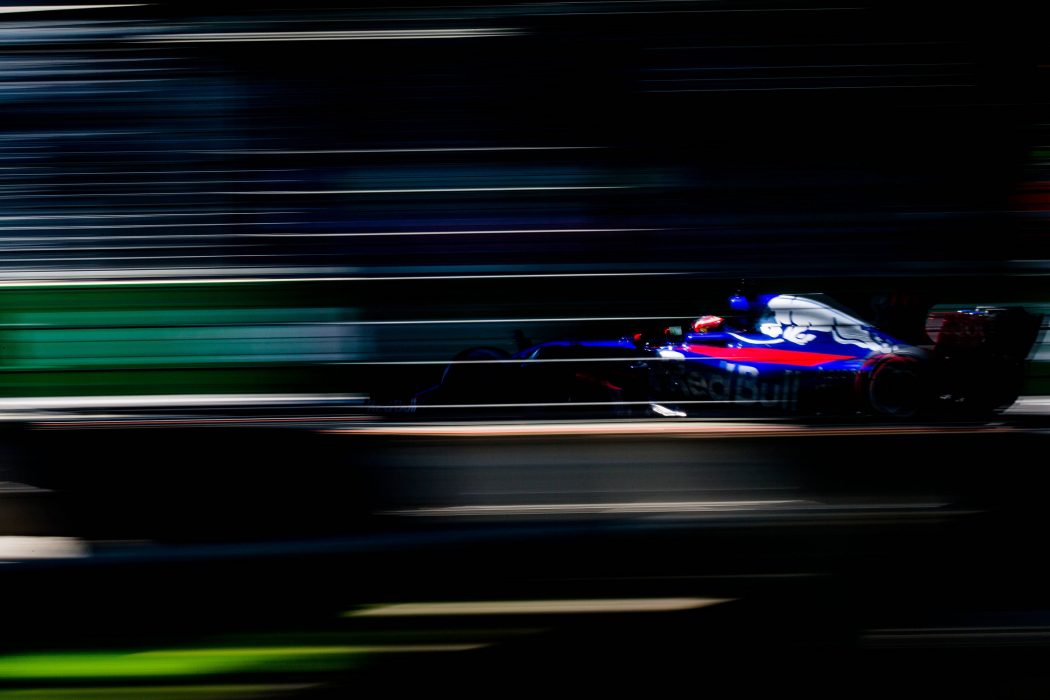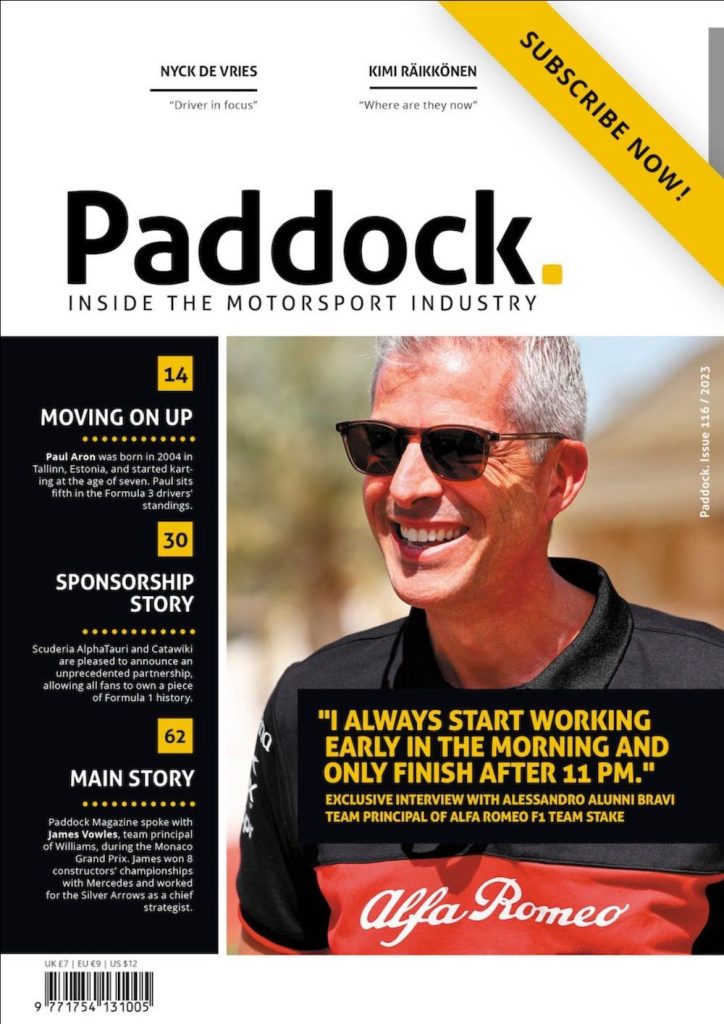What’s the first thing that comes to your mind when you hear the word “racing”? Speed, going fast, danger, recklessness and if you’re a bit cynical, maybe even death.
Click here to subscribe to our print edition!
For avid followers of motorsport, the speed, the looks of the cars, the sound of the engines and the carefree lives (an assumption which fades as you watch more) are the very things that draw us to the sport. These are things we can’t relate to in our daily lives, creating images of people living lives that we can only fantasise about. The freedom of driving fast is something that we all secretly covet because traffic rules imprison us to adhere to speed limits and our minds have a tendency to seek an expansion beyond what’s allowed.
It’s intuitive to think that racing drivers are just that – fast, reckless car drivers with small brains. But as I began to delve deep into the art of being fast on a stopwatch by watching it for years and pursuing the wishful fantasy of moonlighting as a racing enthusiast by racing go-karts, I realised that just trying to drive fast is hardly the point of it all. Rather, resisting that temptation to drive fast all the time and chase lap times has to be one of the hardest things to do. The words that come to my mind now when I hear racing are slower, smoother, calculated and patient.
Mastering this counter-intuitive approach was exactly what made Vettel wipe the floor with Webber & co. during the later stages of his Red Bull career.
Obviously, looks aren’t everything when it comes to racing too. A driver who looks fast is most definitely not setting the lap charts on fire; cars sliding and leaving skid marks gives the viewer the impression that the guy is fast and it can easily trick our brains. This can’t be farther from the truth. And this, I heard, is the hardest thing to teach an amateur. I remember having this particularly annoying experience with a hairpin at the go-kart track I used to frequent. Being the eager beaver, I always approached the corner aggressively from the get-go instead of building up the speed and optimising the entry lap after lap. I would let go off the throttle a bit (I would be less than 2 kart-widths from the hairpin), brake aggressively and just wring the steering wheel like a wet cloth. I wasn’t even close to a good lap-time, so I threw whatever (little) finesse I had and I braked even later and wrung the steering more.
Every time I did that, the rear end came loose. It seemed to have a mind of its own, but I just let it be. After all, I was braking later, turning in sharper into the apex and so I ought to be making time. The more I did that, the more spectacular it felt but the lap times were just as horrible. And so just like the pros, I blamed it on the kart. Over the course of a few months, I would have driven at least 6 go-karts at the same place with the same result. It didn’t take much reflection to determine what the common denominator was. I then came across a video tutorial that spoke about weight transfer in a race car. Surely, it can’t be relevant to an amateur like me driving the simplest of automobiles. These are things that the pros worry about. Except that it shouldn’t be.
The thing that happens in a go-kart under braking is the same thing that happens when your local bus driver stamps on the brake pedal. You end up being hurtled toward the front of the bus because the weight of the bus moves forward, pressing on the front tires. In a go-kart, this implies that the front tires are able to grip more because the weight is literally choking it to make more contact with the asphalt. Meanwhile, there is less weight on the rear tires, giving it a propensity to move around and slide. It puts into perspective why being aggressive on the brakes and turning in violently just after braking is the perfect recipe for sliding.
To counter this, I was advised at the time to just tap the brake pedal a lot earlier and then come off the throttle pedal, gently stroke the steering into the apex and caress the throttle at the exit. In terms of weight transfer, it means that the weight moves forward but then has time to balance out when you come off the throttle for a bit. And since you don’t turn in impulsively, the rear end doesn’t slide around and make you feel like you’re rallying in a go-kart. The curse was lifted and the stopwatch painted a rosy picture too (with 2 different karts) and I drove happily ever after. Whilst I’m sure there were other things that could have improved my lap times, having science on my side ought to have helped. Smooth and patient is possibly the sure-fire way to being fast.
There’s another instance where thinking intuitively can lead you down the wrong road in a racing car. Our first instinct on the out laps of a wet track is to drive really slowly. Slick tires and water just aren’t meant to be and hence instinct tells our legs and hands to exercise extreme caution with both the pedals and the steering. Hence, we spend precious laps gingerly tip-toeing around the track seeking out dry patches and worrying about white lines. But apparently, this is exactly the scenario where you need to be a bit aggressive with the tires and the steering. The fact that slicks don’t have the treads to spread the water makes it all the more necessary to build tire temperature and force it to bite the track for grip. Be smooth in the dry and drive like an animal in the rain. Sounds messed up!
Furthermore, when it comes to driving proper racing cars with aerodynamic parts like the exhaust blown diffuser, the confines of intuition can cost you valuable lap time. Briefly (because a lot of the physics is beyond me!), the blown diffuser generates more of that magical downforce by blowing hot air from the exhausts into the diffuser. The more you floor the throttle, the higher the RPMs and so hotter and faster is the exhaust air which generates more downforce. This is perhaps a bit paradoxical since downforce is most sought-after in corners and corners aren’t the most ideal places to be flooring the throttle (unless they are the flat-out ones). The brain intuitively tells you to come off the throttle in case of oversteer in a corner but the science of the exhaust diffuser tells you to do the exact opposite – floor it and get more grip! Mastering this counter-intuitive approach was exactly what made Vettel wipe the floor with Webber & co. during the later stages of his Red Bull career.
I suppose racing throws up these curve balls simply because being quick in a circuit is a science of how the air meets the car, how the rubber meets the asphalt and how the driver understands all of it. And science is always challenging our intuition. These are probably things every professional racing driver understands (through experience and clever engineers) which is why the difference between the best and worst Formula 1 drivers in equal cars would not be more than three to four-tenths. But science can only get you so far and beyond that, there lies an art, such as Alonso putting his McLaren-Honda in P7 at Barcelona this year. That would probably fall under the realm of sorcery…






Related Articles